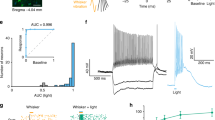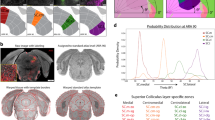Abstract
An unresolved question in neuroscience relates to the extent to which corticothalamocortical circuits emanating from layer 5B are involved in information transfer through the cortical hierarchy. Using a new form of optical imaging in a brain slice preparation, we found that the corticothalamocortical pathway drove robust activity in higher-order somatosensory cortex. When the direct corticocortical pathway was interrupted, secondary somatosensory cortex showed robust activity in response to stimulation of the barrel field in primary somatosensory cortex (S1BF), which was eliminated after subsequently cutting the somatosensory thalamus, suggesting a highly efficacious corticothalamocortical circuit. Furthermore, after chemically inhibiting the thalamus, activation in secondary somatosensory cortex was eliminated, with a subsequent return after washout. Finally, stimulation of layer 5B in S1BF, and not layer 6, drove corticothalamocortical activation. These findings suggest that the corticothalamocortical circuit is a physiologically viable candidate for information transfer to higher-order cortical areas.
This is a preview of subscription content, access via your institution
Access options
Subscribe to this journal
Receive 12 print issues and online access
$209.00 per year
only $17.42 per issue
Buy this article
- Purchase on Springer Link
- Instant access to full article PDF
Prices may be subject to local taxes which are calculated during checkout




Similar content being viewed by others
References
Lee, C.C. & Sherman, S.M. Synaptic properties of thalamic and intracortical inputs to layer 4 of the first- and higher-order cortical areas in the auditory and somatosensory systems. J. Neurophysiol. 100, 317–326 (2008).
Agmon, A. & Connors, B.W. Thalamocortical responses of mouse somatosensory (barrel) cortex in vitro. Neuroscience 41, 365–379 (1991).
Cox, C.L. & Sherman, S.M. Control of dendritic outputs of inhibitory interneurons in the lateral geniculate nucleus. Neuron 27, 597–610 (2000).
Kaas, J.H. The organization of neocortex in mammals: implications for theories of brain function. Annu. Rev. Psychol. 38, 129–151 (1987).
Van Essen, D.C., Anderson, C.H. & Felleman, D.J. Information processing in the primate visual system: an integrated systems perspective. Science 255, 419–423 (1992).
Olshausen, B.A., Anderson, C.H. & Van Essen, D.C. A neurobiological model of visual attention and invariant pattern recognition based on dynamic routing of information. J. Neurosci. 13, 4700–4719 (1993).
Sherman, S.M. & Guillery, R.W. The role of the thalamus in the flow of information to the cortex. Philos. Trans. R. Soc. Lond. B Biol. Sci. 357, 1695–1708 (2002).
Guillery, R.W. & Sherman, S.M. Thalamic relay functions and their role in corticocortical communication: generalizations from the visual system. Neuron 33, 163–175 (2002).
Sherman, S.M. Thalamic relay functions. Prog. Brain Res. 134, 51–69 (2001).
Sherman, S.M. & Guillery, R.W. On the actions that one nerve cell can have on another: distinguishing drivers from modulators. Proc. Natl. Acad. Sci. USA 95, 7121–7126 (1998).
Sherman, S.M. & Guillery, R.W. Functional organization of thalamocortical relays. J. Neurophysiol. 76, 1367–1395 (1996).
Reichova, I. & Sherman, S.M. Somatosensory corticothalamic projections: distinguishing drivers from modulators. J. Neurophysiol. 92, 2185–2197 (2004).
Wilson, J.R., Friedlander, M.J. & Sherman, S.M. Fine structural morphology of identified X- and Y-cells in the cat′s lateral geniculate nucleus. Proc. R. Soc. Lond. B 221, 411–436 (1984).
Sherman, S.M. & Guillery, R.W. Exploring the Thalamus and its Role in Cortical Function (The MIT Press, Cambridge, Massachusetts, 2006).
Staiger, J.F., Kötter, R., Zilles, K. & Luhmann, H.J. Connectivity in the somatosensory cortex of the adolescent rat: an in vitro biocytin study. Anat. Embryol. (Berl.) 199, 357–365 (1999).
MacLean, J.N., Fenstermaker, V., Watson, B.O. & Yuste, R. A visual thalamocortical slice. Nat. Methods 3, 129–134 (2006).
Cruikshank, S.J., Rose, H.J. & Metherate, R. Auditory thalamocortical synaptic transmission in vitro. J. Neurophysiol. 87, 361–384 (2002).
Reinert, K.C., Dunbar, R.L., Gao, W., Chen, G. & Ebner, T.J. Flavoprotein autofluorescence imaging of neuronal activation in the cerebellar cortex in vivo. J. Neurophysiol. 92, 199–211 (2004).
Shibuki, K. et al. Dynamic imaging of somatosensory cortical activity in the rat visualized by flavoprotein autofluorescence. J. Physiol. (Lond.) 549, 919–927 (2003).
Franklin, K.B.J.P.G. The Mouse Brain in Stereotaxic Coordinates (Academic Press, San Diego, California, 2008).
Spreafico, R., Barbaresi, P., Weinberg, R.J. & Rustioni, A. SII-projecting neurons in the rat thalamus: a single- and double-retrograde-tracing study. Somatosens. Res. 4, 359–375 (1987).
Llano, D.A., Theyel, B.B., Mallik, A.K., Sherman, S.M. & Issa, N.P. Rapid and sensitive mapping of long-range connections in vitro using flavoprotein autofluorescence imaging combined with laser photostimulation. J. Neurophysiol. 101, 3325–3340 (2009).
Groh, A., de Kock, C.P.J., Wimmer, V.C., Sakmann, B. & Kuner, T. Driver or coincidence detector: modal switch of a corticothalamic giant synapse controlled by spontaneous activity and short-term depression. J. Neurosci. 28, 9652–9663 (2008).
Diamond, M.E., Armstrong-James, M., Budway, M.J. & Ebner, F.F. Somatic sensory responses in the rostral sector of the posterior group (POm) and in the ventral posterior medial nucleus (VPM) of the rat thalamus: dependence on the barrel field cortex. J. Comp. Neurol. 319, 66–84 (1992).
Mathers, L.H. The synaptic organization of the cortical projection to the pulvinar of the squirrel monkey. J. Comp. Neurol. 146, 43–60 (1972).
Guillery, R.W., Feig, S.L. & Van Lieshout, D.P. Connections of higher order visual relays in the thalamus: a study of corticothalamic pathways in cats. J. Comp. Neurol. 438, 66–85 (2001).
Rouiller, E.M. & Welker, E. Morphology of corticothalamic terminals arising from the auditory cortex of the rat: a Phaseolus vulgaris leucoagglutinin (PHA-L) tracing study. Hear. Res. 56, 179–190 (1991).
Ojima, H. Terminal morphology and distribution of corticothalamic fibers originating from layers 5 and 6 of cat primary auditory cortex. Cereb. Cortex 4, 646–663 (1994).
Bajo, V.M. et al. Morphology and spatial distribution of corticothalamic terminals originating from the cat auditory cortex. Hear. Res. 83, 161–174 (1995).
Winer, J.A., Larue, D.T. & Huang, C.L. Two systems of giant axon terminals in the cat medial geniculate body: convergence of cortical and GABAergic inputs. J. Comp. Neurol. 413, 181–197 (1999).
Hazama, M., Kimura, A., Donishi, T., Sakoda, T. & Tamai, Y. Topography of corticothalamic projections from the auditory cortex of the rat. Neuroscience 124, 655–667 (2004).
Bender, D.B. Visual activation of neurons in the primate pulvinar depends on cortex, but not colliculus. Brain Res. 279, 258–261 (1983).
Van Horn, S.C. & Sherman, S.M. Differences in projection patterns between large and small corticothalamic terminals. J. Comp. Neurol. 475, 406–415 (2004).
Llano, D.A. & Sherman, S.M. Evidence for nonreciprocal organization of the mouse auditory thalamocortical-corticothalamic projection systems. J. Comp. Neurol. 507, 1209–1227 (2008).
Kato, N. Cortico-thalamo-cortical projection between visual cortices. Brain Res. 509, 150–152 (1990).
Bourassa, J. & Deschênes, M. Corticothalamic projections from the primary visual cortex in rats: a single fiber study using biocytin as an anterograde tracer. Neuroscience 66, 253–263 (1995).
Bourassa, J., Pinault, D. & Deschenes, M. Corticothalamic projections from the cortical barrel field to the somatosensory thalamus in rats: a single-fibre study using biocytin as an anterograde tracer. Eur. J. Neurosci. 7, 19–30 (1995).
Guillery, R.W. Branching thalamic afferents link action and perception. J. Neurophysiol. 90, 539–548 (2003).
Guillery, R.W. & Sherman, S.M. The thalamus as a monitor of motor outputs. Phil. Trans. R. Soc. Lond. B 357, 1809–1821 (2002).
Lam, Y.-W. & Sherman, S.M. Mapping by laser photostimulation of connections between the thalamic reticular and ventral posterior lateral nuclei in the rat. J. Neurophysiol. 94, 2472–2483 (2005).
Lam, Y.-W., Nelson, C.S. & Sherman, S.M. Mapping of the functional interconnections between thalamic reticular neurons using photostimulation. J. Neurophysiol. 96, 2593–2600 (2006).
Lam, Y.-W. & Sherman, S.M. Different topography of the reticulothalmic inputs to first- and higher-order somatosensory thalamic relays revealed using photostimulation. J. Neurophysiol. 98, 2903–2909 (2007).
Shepherd, G.M.G., Pologruto, T.A. & Svoboda, K. Circuit analysis of experience-dependent plasticity in the developing rat barrel cortex. Neuron 38, 277–289 (2003).
Callaway, E.M. & Katz, L.C. Photostimulation using caged glutamate reveals functional circuitry in living brain slices. Proc. Natl. Acad. Sci. USA 90, 7661–7665 (1993).
Acknowledgements
We thank N. Issa, T. Husson and A. Mallik for technical assistance with flavoprotein autofluorescence imaging. This work was supported by the US Public Health Service and US National Institutes of Health grants DC008320 (D.A.L.), EY03038 and DC008794 (S.M.S.).
Author information
Authors and Affiliations
Contributions
B.B.T. performed all of the experimental manipulations and data analysis. All authors contributed to hypothesis development, experimental design, data interpretation and manuscript preparation.
Corresponding author
Supplementary information
Supplementary Text and Figures
Supplementary Figure 1 (PDF 63 kb)
Supplementary Video 1
Demonstration of corticothalamocortical pathway sufficiency to drive activity in secondary somatosensory cortex: electrical stimulation movie. Frames are δF/F (change in fluorescence/baseline fluorescence) images overlaid on top of raw images for anatomy. The first section shows the response in secondary somatosensory cortex to S1BF stimulation in a somatosensory slice preparation. The second section shows the secondary somatosensory cortex response following a cut between S1BF and secondary somatosensory cortex, which likely eliminated the direct pathway. The third section shows cortical response following thalamic ablation. Each stimulus is repeated in each section for emphasis. Time(s) is shown in each frame; movie is approximately 3× real-time. See Figure 2 for more details (MOV 5516 kb)
Supplementary Video 2
Demonstration of corticothalamocortical pathway sufficiency to drive activity in secondary somatosensory cortex: reversible inactivation movie. The first section shows layer 5 of S1BF in an intact corticothalamocortical slice being stimulated via microspritzing of glutamate. The second section shows the slice response to the same stimulus type ~4 minutes after local application of 500 μM DNQX in the thalamic hotspot. The third section shows the response after DNQX washout. See Supplementary Figure 1 and Figure 3 for more details. (MOV 5417 kb)
Supplementary Video 3
Fluorescent tracer injection movie. Lysine-fixable 10,000 MW Texas Red dextran (Invitrogen/Molecular Probes) was injected using the same protocol used to inject DNQX (see Online Methods). The tracer stream is mostly confined to a narrow channel throughout the injection, with only small wisps that track around the interface between the electrode and ACSF but do not approach S1BF or secondary somatosensory cortex. Images were captured using the same equipment under the same conditions used in FA imaging (see Online Methods). Time(s) is shown in each frame; movie is approximately 23.4× real-time. (MOV 3096 kb)
Rights and permissions
About this article
Cite this article
Theyel, B., Llano, D. & Sherman, S. The corticothalamocortical circuit drives higher-order cortex in the mouse. Nat Neurosci 13, 84–88 (2010). https://doi.org/10.1038/nn.2449
Received:
Accepted:
Published:
Issue Date:
DOI: https://doi.org/10.1038/nn.2449
This article is cited by
-
The secondary somatosensory cortex gates mechanical and heat sensitivity
Nature Communications (2024)
-
The impact of the human thalamus on brain-wide information processing
Nature Reviews Neuroscience (2023)
-
Nucleus reuniens transiently synchronizes memory networks at beta frequencies
Nature Communications (2023)
-
A systematic review of resting-state and task-based fmri in juvenile myoclonic epilepsy
Brain Imaging and Behavior (2022)
-
Enhanced habit formation in Tourette patients explained by shortcut modulation in a hierarchical cortico-basal ganglia model
Brain Structure and Function (2022)



